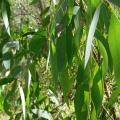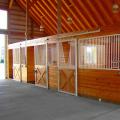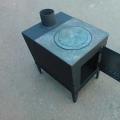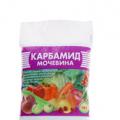Initial data:
1. Blank - steel 20
2. Ultimate strength of steel 20 - σ = 412 MPa, Brinell hardness HB = 163 MPa
3. Workpiece diameter D= 80mm
4. Part diameter (after processing) d= 75 mm
5. Length of the processed surface l = 150 mm
6. Required roughness Ra=1µm
7. Quality - 7
8.Machine-1K62
When calculating the cutting mode it is necessary:
1) select the type, dimensions and geometric parameters of the cutter;
4) check the selected cutting mode by:
a) according to the drive power of the machine spindle,
b) by the strength of the feed mechanism,
c) by the strength of the cutter holder and
d) by the strength of the hard alloy plate.
5) calculate the time required to complete the operation;
6) calculate the required number of machines;
7) check the effectiveness of the selected cutting mode and selected equipment.
1. Selecting a turning tool……………………………………………………….Page. 3
1.1. Selection of material for the cutting part of the cutter…………………………………..p. 3
1.2. Assignment of cutter sizes……………………………………………………………p. 3
1.3. Purpose of geometric parameters of the cutting part of the cutter……….p. 3
2. Setting the cutting depth…………………………………………………...p. 3
3. Assignment of feed amount…………………………………………………..p. 3
4. Determination of cutting speed…………………………………………………p. 4
4.1. Determination of cutting speed…………………………………………….p. 4
4.2. Determination of spindle rotation speed based on calculated
cutting speed……………………………………………………………………………….p. 5
4.3. Clarification of the spindle speed according to the machine passport………...page. 5
4.4. Determination of actual cutting speed……………………………p. 5
5. Checking the selected cutting mode……………………………………p. 5
5.1. Checking the drive power of the machine spindle……………………...page. 5
5.2 Checking the strength of the longitudinal feed mechanism of the machine………..p. 6
5.3 Checking the strength of the cutter holder……………………………………...page. 7
5.4. Checking the strength of the carbide blade of the cutter……………..p. 7
6. Calculation of the operation time………………………………………...p. 7
6.1. Calculation of main time……………………………………………………pp. 7
6.2. Calculation of piece time………………………………………………………pp. 8
7. Calculation of equipment needs……………………………………………p. 8
8. Technical and economic efficiency……………………………………p. 8
8.1. Basic time coefficient…………………………………………..p. 8
Machine power utilization coefficient……………………...p. 8
9. Factors influencing cutting conditions……………………………..………p. 9
9.1. Cutting fluids (coolants)………………………………..p. 10
9.2. Type of turning………………………………………………………...page. eleven
9.3. Feed and cutting depth……………………………………………………page 12
9.4. Cross-section of the cutter holder……………………………………………………...page. 13
9.5. Permissible amount of cutter wear……………………………………………………………page. 14
9.6. Surface condition of the processed material and
chemical composition……………………………………………………………………...p. 14
9.7. Cutting speed and durability…………………………………………….p. 14
References………………………………………………………………………………….p. 16
APPENDICES………………………………………………………………………………...page. 17
1. Selecting a turning tool
1.1 Selection of material for the cutting part of the cutter
Based on the general allowance for processing and the requirements for surface roughness, we carry out processing in three passes (roughing - 1 and finishing turning - 2). According to Table 2P, I select the material of the hard alloy plate:
for rough turning - T5K10,
for finishing turning - T15K6.
1.2. Assignment of cutter sizes
For a 1K62 machine with a center height of 200 mm, the cross-sectional dimensions of the cutter holder are: HxB = 25x16 mm.
For processing, I choose a straight through bent cutter with a hard alloy plate, the dimensions of which are given in Table 3P: cutter 2102 - 0055 GOST 18877-73.
1.3. Assignment of geometric parameters of the cutting part of the cutter
Depending on the material of the cutting part of the cutter and the processing conditions, I select the same shape of the front surface of the cutters (for roughing and finishing turning) according to the table. ZP: number II b - flat, with a negative chamfer. According to GOST for turning cutters, according to tables 5P - 7P, I select the geometric parameters of the cutters: ,  ,
, ,
, ,
, ,
, ,
,
Setting the cutting depth
The depth of cut tshould be taken equal to the processing allowance for this operation.
 ,
,
where D is the diameter of the workpiece, mm;
d – diameter after processing, mm.
For rough turning:

For finishing turning:
 ;
;

Feed amount assignment
When roughing, I select the feed according to table 10P depending on the material being processed, the diameter of the workpiece and the cutting depth in the range of 0.6-1.2 mm/rev. I accept  = 0.8 mm/rev.
= 0.8 mm/rev.
When finishing machining, I select the feed according to Table 9P depending on the surface roughness and the radius at the tip of the cutter, which I take equal to 1.2 mm,
I check the selected feeds according to the machine’s passport data. 1K62 according to the application. I award the following serves  = 0.78 mm/rev,
= 0.78 mm/rev,  = 0.11 mm/rev.,
= 0.11 mm/rev.,  = 0.07 mm/rev.
= 0.07 mm/rev.
4. Determination of cutting speed
4.1. Determining the cutting speedv, m/min. according to the formula:

Where  - coefficient depending on processing conditions (according to Table 11P for roughing
- coefficient depending on processing conditions (according to Table 11P for roughing  = 340; for finishing -
= 340; for finishing -  =
420);
=
420);
T - tool life, min (we accept  = 30 min);
= 30 min);
x, y, m - exponents (Table 11P);
 - a general correction factor, which is a product of individual coefficients, each of which reflects the influence of a certain factor on the cutting speed.
- a general correction factor, which is a product of individual coefficients, each of which reflects the influence of a certain factor on the cutting speed.
For cutters with carbide insert  equals:
equals:
Where  - general correction factor taking into account the influence of the physical and mechanical properties of the processed material table. 12P,
- general correction factor taking into account the influence of the physical and mechanical properties of the processed material table. 12P,  and we find from the table. 1st salary:
and we find from the table. 1st salary:


 - correction factor taking into account the state of the workpiece surface, according to Table 14P - during roughing
- correction factor taking into account the state of the workpiece surface, according to Table 14P - during roughing  = 0.8, for finishing -
= 0.8, for finishing -  =
1,0;
=
1,0;
 - correction factor taking into account the material of the cutting part, according to table. 15P -
- correction factor taking into account the material of the cutting part, according to table. 15P -  =
0,65;
=
0,65; =
1,0;
=
1,0;
 - correction factor taking into account the main angle in the cutter plan, according to table. 16P - for φ = 45°
- correction factor taking into account the main angle in the cutter plan, according to table. 16P - for φ = 45°  =
1,0;
=
1,0;
 - only for high-speed steel cutters;
- only for high-speed steel cutters;
 - correction factor taking into account the type of processing, according to Table 17P
- correction factor taking into account the type of processing, according to Table 17P  = 1,0.
= 1,0.
The general correction factor for cutters (roughing and finishing) is:
Exponents x, y and m according to Table 11P
for roughing - (at 0.7 mm/rev),
for finishing - (at S up to 0.3 mm/rev).
Cutting speed, m/min, is equal to:

Hello again! Today the topic of my post is the main movements during turning such as cutting speed and feed. These two components of cutting modes are fundamental when turning metal and other materials.

The main movement or cutting speed.
If we look at the figure given above, we will see that the main movement during the machine is performed by the workpiece. It can rotate both clockwise and counterclockwise. Basically, as we see, the rotation is directed towards the cutter, since this ensures the cutting of the surface layer from the workpiece and the formation of chips.
The rotation of the workpiece is imparted by the lathe spindle and the spindle speed range (n) is quite large and can be adjusted depending on the diameter of the part, its material and the cutting tool used. When turning, it is mainly
The cutting speed during turning is calculated by the formula:
V- this is the most important movement called cutting speed.
P is a constant that equals 3.14
D— diameter of the workpiece (workpiece).
n- the number of revolutions of the machine spindle and the part clamped in it.
Feed movement during turning.
You probably already understood about the feed movement. YES this is the movement of the cutting tool which is fixed in the tool holder (for this sketch). The attachment of the incisors may be different, but more on that later :) To carry out feed on a lathe, a special kinematic scheme of gears is used. If this is simple turning, then the synchronization of the rotation of the workpiece and the cutting tool is not important, but if you decide to cut threads, then everything will be different. We'll talk about this in future articles. If you don't want to miss them then subscribe to my blog updates.
The formulas for calculating the feed movement on a lathe look different, because it can be either a feed per revolution or a minute feed.
Feed per revolution— this is the distance that the cutting tool (in our case, the cutter) travels during one revolution of the workpiece. Depending on the type of processing, the definition may be different. For example, this is the distance that the workpiece moves relative to the cutter in one revolution.
Minute feed- this is the distance that the cutter travels in one minute (which is logical from the name).
Cutting speed and feed. Conclusion.
And so we can sum it up. Today we learned about the main movements during turning such as cutting speed and feed. I do not intend to load you with a mass of formulas and cumbersome definitions; you can find them in various books about mechanical engineering and metal cutting; I want to explain to you the basic concepts in human and understandable language. I think we will succeed :)
That's all for today. See you soon friends!
Andrey was with you!
Why is the correct installation of the cutter on a lathe necessary and how to carry out the installation correctly? Basic rules, as well as some subtleties.
The entire course of the turning process on lathes from the very beginning until the final result is mainly determined by the correct installation of the cutter in the tool holder. Otherwise, if it is positioned incorrectly, the machine faces fairly rapid wear of the cutting edge.
It is also not uncommon for this problem to cause serious equipment breakdowns, which often entail significant material losses in production.
Before starting, you must first thoroughly clean the supporting surfaces of the holder. The main rule for installing a cutter on a lathe is essentially that its top must be at the levels of the machine center line.
Remember that setting below this line will lead to the part being pushed out of the centers when running, and setting above will lead to unacceptable heating and extremely rapid wear.
But in other cases, to further improve the performance of the cutter, minor deviations are allowed. For example, during the roughing process, the part is installed with a slight excess above the level of the centers, ranging from 0.3 to 1.2 mm (depending solely on the diameter of the workpiece).
A completely different case is finishing turning, in which the cutter is installed with a reduction by a similar amount.
Being secured in the tool holder with at least two bolts, the tool must be brought strictly to the center of the tailstock or headstock and adjusted in height, placing no more than three pads under it. This will give maximum accuracy when installing the part. 
The linings themselves also deserve special mention: they should be prepared as a whole set immediately in advance. There is no need to replace them with pieces of metal or other materials.
The shims must be placed on the supporting surface of the tool holder, while controlling the overhang of the tool - it should not exceed 1.5 times the height of the rod, otherwise vibration of the part cannot be avoided during operation of the machine.
Further adjustment of the cutter to the required depth can be done in two ways: using the test chip method or with a cross-feed dial. When choosing the first technology, the cutter is brought close to the first contact with the surface of the rotating part.
Video: adjusting (installing) cutters for a lathe.
According to the type of processing, turning tools are divided into pass-through, scoring, boring, cutting-off, slotting, grooving, fillet, threaded and shaped (Fig. 11.10).
Rice. 11.10.
A– boring a blind hole with a boring cutter; b– turning grooves and cutting with a detachable scoring tool; V– longitudinal turning with a through cutter; G– turning grooves with a groove cutter; d– cutting conical grooves; V– finishing turning with a rounded cutter; and– finishing longitudinal turning with a wide cutter; h– longitudinal turning with a bent cutter; And - cutting threads with a thread cutter; To– longitudinal turning with a persistent cutter; l– shaped turning with a prismatic shaped cutter
A boring cutter is used for boring pre-drilled axial holes, both through and blind (Fig. 11.10, A).
Trimming (Fig. 11.10, b) the end surfaces of cylindrical parts and processing of planes of body parts is carried out with transverse feed of the caliper using scoring cutters.
Cutting parts and cutting grooves (Fig. 11.10, b, d) also carried out with transverse feed of the caliper. However, in this case, parting and groove cutters are used, respectively.
External cylindrical surfaces are ground with straight or persistent cutters (Fig. 11.10, c, f, g, h). Blanks for smooth shafts are turned, installing them in the centers; for stepped shafts, according to the schemes for dividing the allowance or length of the workpiece into parts. Cylindrical surfaces are obtained by turning with longitudinal feed of the caliper.
External and internal threads are cut with thread cutters (Fig. 11.10, i), which make it possible to obtain all types of threads: metric, inch, modular and pitch with any profile - triangular, rectangular, trapezoidal, semicircular, etc. The productivity of the process is low.
Longitudinal turning to the shoulder is carried out with a persistent cutter (Fig. 11.10, To).
Various types of shaped surfaces of rotation are formed mainly by the same methods as when turning. Prismatic and disk shaped cutters are used (Fig. 11.10, l) or mechanical, electrical or hydraulic copiers.
Fillet cutters are used to machine rounded grooves and transition surfaces.
Cutting modes
The main technological parameters for controlling the cutting process are: cutting speed V, tool feed S, processing depth t, tool material and parameters of its geometry, composition, methods and intensity of supply of the lubricant and cooling medium.
Approximately, during rough turning, the processing depth can reach 12 mm, and during finishing - no more than a few tenths of a millimeter. The feed, depending on the cutting depth and material, is -0.3-2.0 mm/rev, the cutting speed is 1.5-7.5 m/s. For machines without CNC, cutting modes, depending on specific conditions, are selected from tables of general machine-building standards. Modern machines with CNC control systems have in their memory extensive databases of materials, standard designs, tools, etc. This allows the operator, when entering the initial and final profiles of the workpiece, dimensions and accuracy of the part, material properties, etc., to automatically obtain information about the processing route, types of tools and start making it.
Hard turning called turning of workpieces with a hardness above 47 HRC and special cutting conditions. This is a new, developing type of processing of rotating bodies, which is often a more economically feasible alternative to grinding. Modern tool materials, technologies and machine designs make it possible to increasingly introduce this process into production.
A distinction is made between rough turning, precision turning and particularly precise hard turning. Roughing is implemented at processing depths of 0.5–3 mm, cutting speeds of 50–150 m/min and feeds of 0.1–0.3 mm/rev and requires maximum rigidity and drive power from the machine. In precision hard turning, the depth of cut does not exceed 0.1-0.5 mm at a cutting speed of 100–200 m/min and a feed of 0.05–0.15 mm/rev. The processing accuracy corresponds to 5–6th quality with surface roughness after processing R z 2.4–4 µm. Particularly precise hard turning ensures processing accuracy within the 3rd–4th grade with a roughness of up to R z 1 µm. The depth of cut is in the range of 0.02–0.3 mm at a cutting speed of 150–220 m/min and a feed of 0.01–1 mm/rev.
Functionally, the principle of hard turning is to heat the workpiece material 1 in the area of contact with the cutting edge 4 to the glow temperature (Fig. 11.11,11.12). No cutting fluids are used in the process. Specially selected tool geometry and processing modes heat the material, which leads to 2 to tempering to a hardness of about 25 HRC. After chip separation 3 rapid cooling of the material occurs.

Rice. 11.11.
1 – workpiece (62 HRC); 2 – cutting zone (HRC 25); 3 – chips (HRC 45); 4 – cutting edge
As a result, the hardness of the part decreases by no more than 2 units, and the resulting chips have a hardness of about 45 units. The main part of the part practically does not heat up. An example of hard turning is shown in Fig. 11.12.

Rice. 11.12.
To carry out hard turning, it is necessary to use machines with high accuracy, static and dynamic rigidity, temperature stability and ensuring free flow of chips.
The tool materials of the working part of cutters for hard turning are cutting ceramics and cubic boron nitride.
The ends and ledges are processed with trimming, bent through or through persistent cutters. Scoring cutter, drawing - a) is intended for processing external end surfaces. When cutting the end, the feed of the cutter is perpendicular to the axis of the workpiece. Scoring cutter, figure b) allows you to process various end and other surfaces with longitudinal and transverse feeds. Scoring cutters are made with plates made of high-speed steels and hard alloys. Main relief angle α=10-15 degrees, rake angle γ is selected depending on the material being processed. Using a bent cutter, figure c), you can trim the end with a transverse feed S2 and grind with a longitudinal feed S1 of the cutter. Using a continuous thrust cutter, figure - d), you can trim the ends and grind the ledges with longitudinal feed S1. The cutters for trimming the ends must be installed exactly along the axis of the part, otherwise a protrusion will remain at the end of the part. If the diameter of the end surface is large, the allowance is removed with a transverse feed in several passes. Ledges of more than 2-3 mm are trimmed with passing cutters in several steps. First, the shoulder is formed during the longitudinal feed S1 of the cutter, and then it is trimmed during the transverse feed S2, figure - e).
Cutting modes. When cutting ends and shoulders, transverse and longitudinal feeds are determined in the same way as when turning cylindrical surfaces. The transverse feed is usually taken less than the longitudinal feed. For roughing of ends, transverse feeds of 0.3-0.7 mm/rev at a cutting depth of 2-5 mm are recommended, and for finishing machining 0.1-0.3 mm/rev at a cutting depth of 0.7-1 mm. The cutting speed for processing ends and shoulders is usually 20% higher than when processing external cylindrical surfaces, since the time the cutter participates in the cutting process is insignificant and it does not have time to heat up to a critical temperature.




